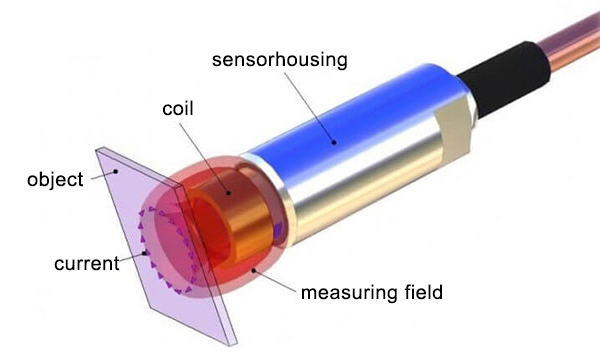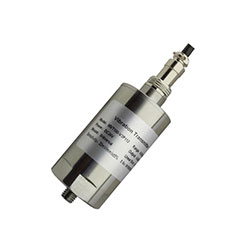Vibration Transmitter Working Principle
A vibration transmitter is a device designed to sense and detect the vibrations of objects, widely utilized across various fields. Its operation is primarily based on the principles of elasticity and electromagnetism. The vibration sensor converts the vibration signal of an object into an electrical signal, processes and analyzes it through internal circuits, ultimately providing real-time vibration information to the user. In this article, ATO industrial automation will briefly introduce its working principle to you, to help you have a better understanding of vibration transmitter.
Working Principles of Vibration Transmitter
The main components of a vibration transmitter include a mass block, a spring, and an induction coil.
When the object being monitored vibrates, the mass block is subjected to vibrational forces, resulting in displacement. After displacement, the change in distance between the mass block and the induction coil alters the magnetic field within the coil. According to the electromagnetic induction law, this change in the magnetic field induces an electromotive force (EMF) in the induction coil. This induced EMF is directly proportional to the displacement of the mass block, making it suitable for indirectly measuring the vibration of the object.
In the operation of the vibration transmitter, the spring plays a crucial role in connecting the mass block and the sensor. It not only provides freedom of vibration for the mass block but also filters and tunes the vibration signal. The stiffness of the spring and the mass of the block are two important parameters influencing the sensitivity and frequency response of the sensor. Higher stiffness enhances sensitivity, while greater mass widens the frequency response range of the sensor.
The induction coil is a critical component of the vibration transmitter, usually wound with conductive wire and excited by high-frequency signals. When the induction coil experiences displacement due to object vibration, the magnetic field within the wire changes. According to Faraday's electromagnetic induction law, this change in the internal magnetic field generates induced current in the wire. This induced current is amplified and processed, ultimately converted into an electrical signal representing the vibration signal. The design and manufacture of the induction coil significantly impact the sensitivity and frequency response of the sensor.
To enhance the measurement performance of the vibration transmitter, it is common to amplify, filter, and tune its output signal. In the sensor circuit, electronic components such as amplifiers, low-pass filters, and analog-to-digital converters are added to process and optimize the signal. Amplifiers rapidly amplify weak induced currents, increasing signal strength and resolution. Low-pass filters weaken high-frequency signals, improving the sensor's signal-to-noise ratio and interference resistance. Analog-to-digital converters convert analog signals into digital signals, facilitating subsequent data analysis and processing.
Applications of Vibration Transmitter
The working principle of vibration transmitters, based on the principles of elasticity and electromagnetism, involves measuring the displacement and magnetic field changes in the induction coil when an object vibrates. This allows the conversion of vibration signals into electrical signals, which are processed and optimized through circuits to provide real-time vibration information to users. Vibration transmitters find widespread applications in fields such as mechanical engineering, automotive, aerospace, and construction, offering robust support for research and engineering practices in these areas.
In the application of vibration transmitters, common scenarios include fault diagnosis, structural monitoring, and safety assurance.
- In fault diagnosis,
 vibration transmitters are employed to detect the vibration of mechanical equipment. Through analysis of vibration signals, early signs of mechanical failures can be identified, enabling timely maintenance and preventive measures to avoid further damage.
vibration transmitters are employed to detect the vibration of mechanical equipment. Through analysis of vibration signals, early signs of mechanical failures can be identified, enabling timely maintenance and preventive measures to avoid further damage. - Moreover, vibration transmitters play a vital role in structural monitoring. Installing them on structures such as bridges and buildings allows real-time monitoring of structural vibrations, facilitating the prompt detection and repair of damaged parts, thereby enhancing the safety of buildings.
It is worth noting that the applicability of vibration transmitters has certain limitations. The physical structure and working principles of the sensor determine its suitability for specific vibration frequency ranges. Generally, vibration transmitters are suitable for detecting vibrations in the low to high-frequency range, with common frequency ranges ranging from tens of hertz to several kilohertz. For vibrations at higher or lower frequencies, specific types of sensors need to be selected for detection.
In summary, a vibration transmitter is a device designed to sense and detect object vibrations, operating based on the principles of elasticity and electromagnetism. By measuring the displacement and magnetic field changes in the induction coil during object vibrations, the vibration signal is converted into an electrical signal, processed, and optimized through circuits, ultimately providing real-time vibration information to users. Vibration transmitters find extensive applications in fault diagnosis, structural monitoring, and safety assurance, but their performance and parameters have certain limitations, requiring the selection of appropriate sensor types based on actual needs. In future developments, ongoing research and improvements in vibration transmitter technology aim to enhance sensitivity, reliability, and interference resistance to meet diverse requirements for vibration detection in different fields.

